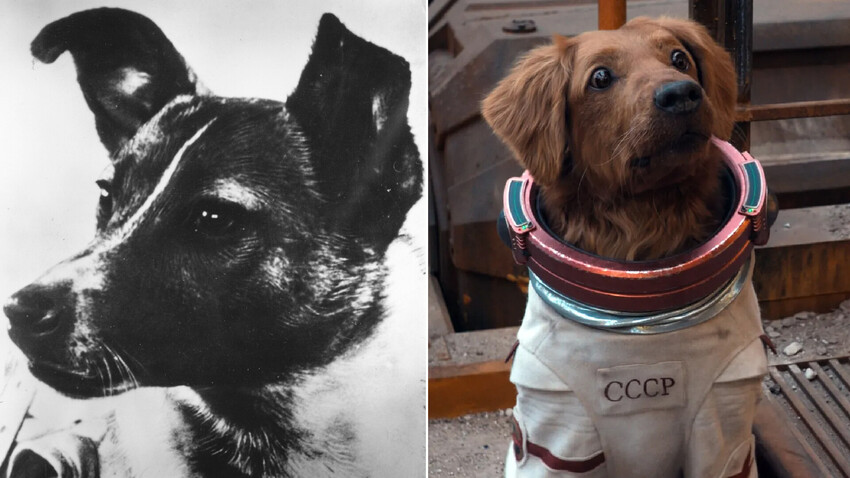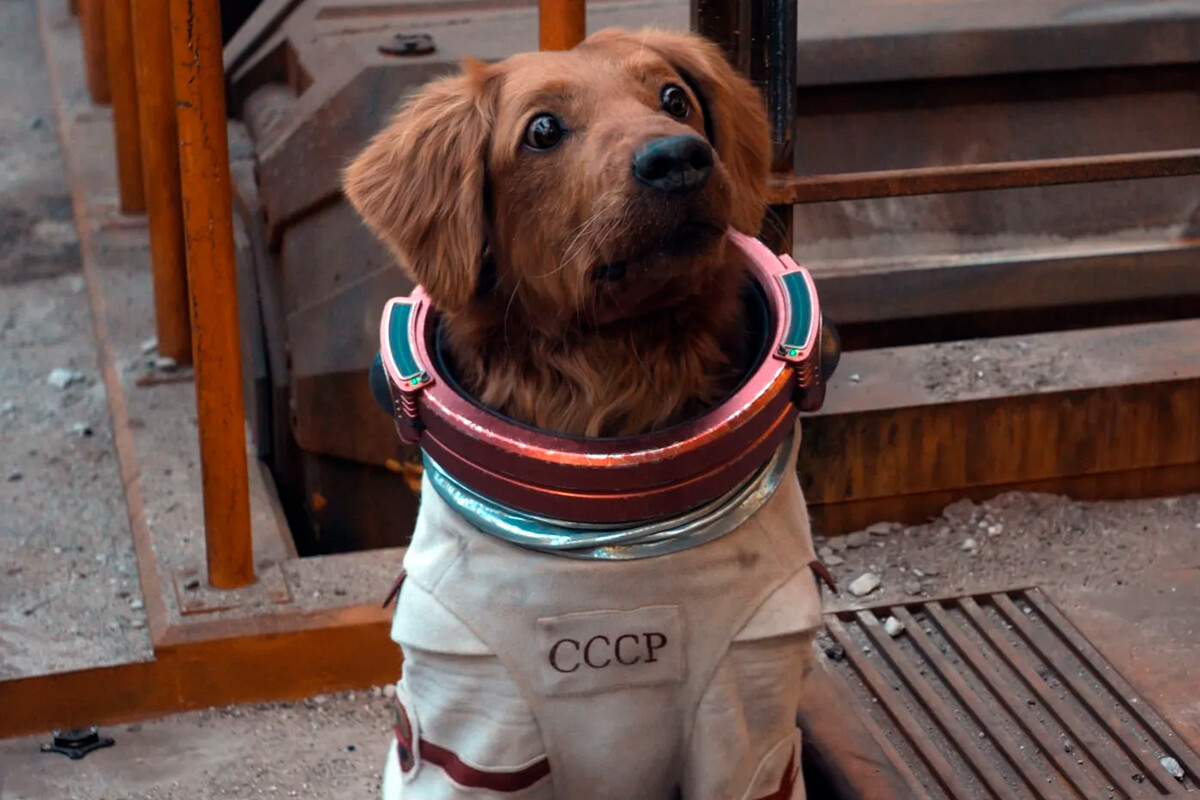
Laika was found on the street, like most of the dogs that participated in Soviet space experiments. She was the first living creature to go into space. Her fate has inspired filmmakers, writers and musicians all around the world to create all kinds of works.
One of her “reincarnations” is the Marvel Universe character Cosmo the Space Dog. In the first two installments of the ‘Guardians of the Galaxy’ franchise, Cosmo only had cameo roles. However, after giving the character a female (in an obvious hat tip to Laika) robotic voice enabler in the franchise’s 30-minute holiday special, director James Gunn decided to include the now talking dog in the third installment, ‘Guardians of the Galaxy, Vol. 3’ (2023).

Laika flew into space on November 3, 1957 - just a month after the launch of the first artificial satellite, when, for three weeks straight, the whole world listened to the famous “beep-beep-beep” sound and the space age of mankind kicked off.
Its flight was facilitated by the unprecedented excitement following the launch of the first satellite. General Secretary Nikita Khrushchev personally instructed to prepare the next mission as soon as possible, which would be even more dizzying, as it was to involve a living being. It was necessary to be in time for the 40th anniversary of Soviet power on November 7.

Sergei Korolev, the head of the space program, supported the idea. Even more so, because dog-based medical and biological research had been going on for a long time, since the 1940s. Initial tests were done at a secret laboratory in the Institute of Aviation Medicine, which hid under the cipher: ‘Military unit number 2469’.
Not only trained dogs were ready in time, but also a cabin with an automatic feeding device and a dog “toilet” (which, incidentally, introduced a “discrimination” in the ranks of dogs based on gender - the simplest design was designed only for female dogs, so male dogs had to remain on Earth).

What wasn’t available at the time was a satellite capable of returning from orbit to Earth. “Of course, Laika was doomed from the very start, since the return mechanism didn’t exist then,” said Oleg Gazenko, an academician and leading scientist of the space program. - But it [Laika’s death] was supposed to happen after about a week of flight.” Unfortunately, she died much earlier.
Laika began to be prepared for the flight three days in advance. They disinfected her, smeared iodine on her ribs and by her carotid artery, put her in a bomb suit and put her in a pressurized cabin.
During the launch, her pulse rate more than tripled, to 250 beats per minute. Her breathing rate quadrupled. But, once in orbit, after the engines shut down, the dog calmed down. Everyone watched her flight with hope.

However, after five hours, the fans in the cabin could not cope with the heat load, with the temperature in the cabin reaching 42 degrees Celsius. After the fourth flight around the Earth, the instruments recorded a cardiac arrest - Laika died of hyperthermia. The Sputnik-2 spacecraft, with a dead dog, stayed in orbit for half a year before it burned down in the atmosphere on April 14, 1958.
The details of the dog’s death were not disclosed until 2002. Back in 1957, the Soviet press published reports on Laika’s state of health for seven days straight. Officially, Laika was alive.
In the West, the flight was, as expected, a sensation. “The world’s shaggiest, loneliest and most miserable dog,” The New York Times wrote on November 5, 1957. She was admired and everyone was deeply worried about her.
When, a week later, Soviet media stopped publishing information about Laika, the West became alarmed. The initial information from the Soviet Union was that Laika would return to Earth. European newspapers came out with the headlines: “Space Dog Dead?” Tension was increasing.

The Soviets had to sweat it out - a rumor was spread through friendly European newspapers that the dog “had been put to sleep by a strong drug added to the last bite of food to avoid suffering from prolonged agony.” This news was accompanied by the epitaph: “By sacrificing herself, Laika gave science precious information that will soon enable mankind to conquer space.”
The news provoked a barrage of criticism in the West, with numerous accusations of the Kremlin’s experimenters’ cruelty. Inside the Soviet Union, they tried not to speak about the death of the first animal in orbit - it went almost unnoticed. Soviet newspapers focused on technical progress. To commemorate it, the USSR only released the ‘Laika’ cigarette and, in 2008, a monument was unveiled at the Institute of Military Medicine in Moscow.
Dear readers,
Our website and social media accounts are under threat of being restricted or banned, due to the current circumstances. So, to keep up with our latest content, simply do the following:
If using any of Russia Beyond's content, partly or in full, always provide an active hyperlink to the original material.
Subscribe
to our newsletter!
Get the week's best stories straight to your inbox